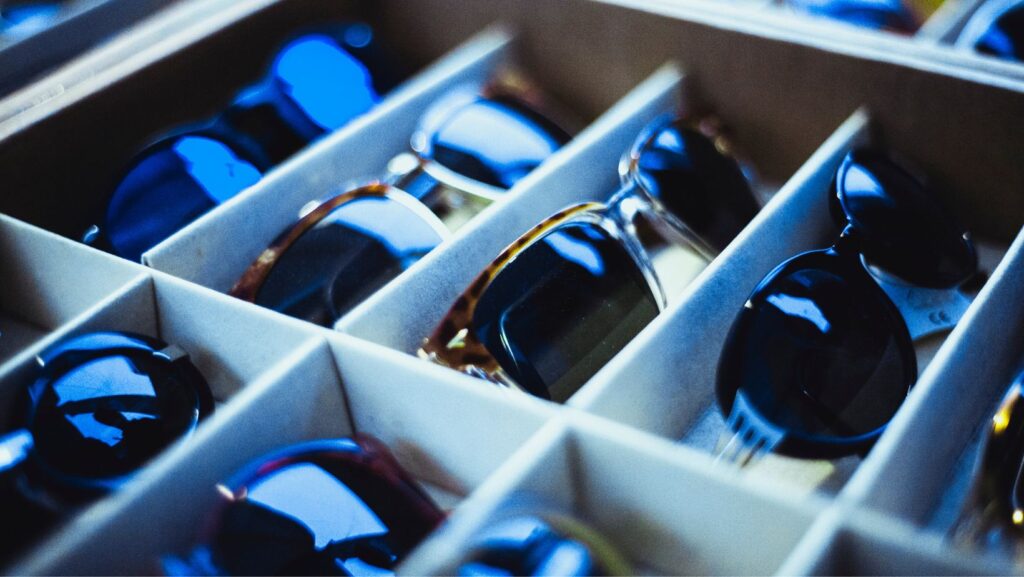Protecting your eyes from the sun’s harmful ultraviolet rays while stepping outdoors is just as important as shielding your skin from UV radiation. There are many eyewear options available these days, including traditional sunglasses and photochromic lenses, to protect your eyes outdoors. Each of them have their advantages and disadvantages. Let’s learn further in detail what photochromic lenses are and how they differ from traditional sunglasses.
Photochromic lenses
Also known as transition lenses, photochromic lenses are optical lenses that darken in response to sunlight or ultraviolet rays, transitioning to a darker shade outdoors. They return to their clear, original state when they are back indoors. These lenses are particularly a convenient option for those who wear prescription glasses and don’t want the hassle of carrying around two pairs of glasses and sunglasses.
Traditional sunglasses
Traditional sunglasses are equipped with tinted lenses that are designed to protect the eyes from UV rays and reduce glare from surfaces. Available in a variety of brands, colours, shapes and lens technologies, such as polarised, mirrored and gradient, these designer sunglasses are perfect for wearing during different activities, ranging from driving to hiking and enjoying water sports.
Photochromic lenses vs. traditional sunglasses
UVA and UVB protection
Both photochromic lenses and traditional sunglasses offer 100% UVA and UVB protection. The intensity of the protection depends more on the quality of the lenses than on the type of lens. Regardless of whether you choose transition lenses or sunglasses, both will protect your eyes from harmful UV radiation, provided they are purchased from reputable retailers, such as Feel Good Contacts.
Adaptability to light conditions
Photochromic lenses have a leg up on sunglasses when it comes to adapting to changing light conditions. Their standout feature provides seamless transition, eliminating the need to switch between different eyewear constantly. Step into the sun and they darken; head indoors and they lighten, gradually returning to clear. These transition lenses are ideal for individuals who frequently move between indoor and outdoor environments.
However, the disadvantage of transition lenses is that they are not as fast as desired. They may take a couple of minutes to completely darken or return to clear, which can be slightly inconvenient. On top of it, most photochromic lenses are unlikely to react inside a car, as most car windshields filter out all the UVB rays and approximately a third of the UVA rays that activate transition. Apart from the Transitions Drivewear, photochromic lenses are not ideal for driving.
Traditional sunglasses, on the other hand, offer immediate protection from the sun, owing to their permanently tinted lenses. Once you put them on, you don’t have to wait for them to do their job. However, they lack the adaptability factor and need to be taken off or switched with glasses while indoors.
Style and aesthetic appeal
Traditional sunglasses are an undisputed winner here, as they come in countless styles, lens tints and fashion-forward designs. Whether you prefer oversized cat eye frames or classic aviators, there’s something suitable for every face and occasion. Moreover, sunglasses with polarised lenses reduce glare from surfaces, making them ideal for water sports or snowy conditions.
Although photochromic lenses can also be available in stylish frames, they are generally more practical than fashionable. The most common tints they are available in are grey, brown or green. Additionally, some users may find the transitioning look, which is the mid-tint phase, less flattering.
Convenience and versatility
Photochromic lenses outshine traditional sunglasses in terms of versatility and convenience. Those who wear glasses for vision correction can benefit from photochromic lenses, which serve as both regular spectacles and eyewear for outdoor sun protection. This dual quality makes them a cost-effective and hassle-free choice.
While traditional sunglasses are excellent for specific outdoor settings, they can be a hassle at times when an individual has to carry their prescription glasses as well.
Both photochromic lenses and traditional sunglasses have their own set of pros and cons. Make your choice depending on your lifestyle, fashion and the level of outdoor activities.
